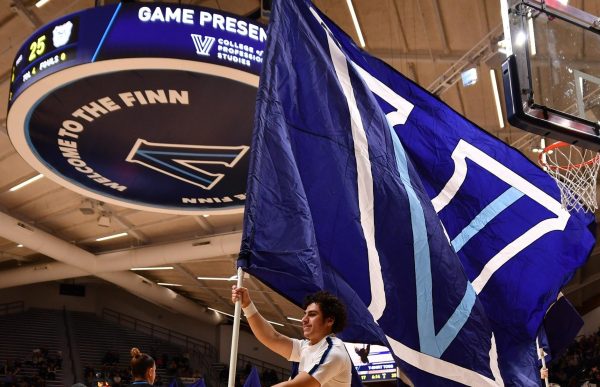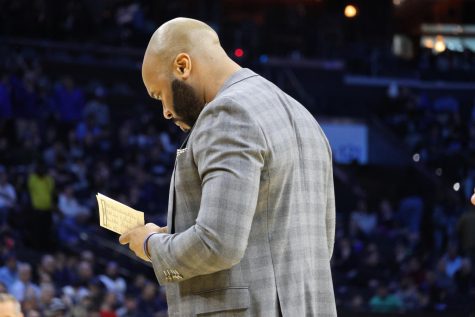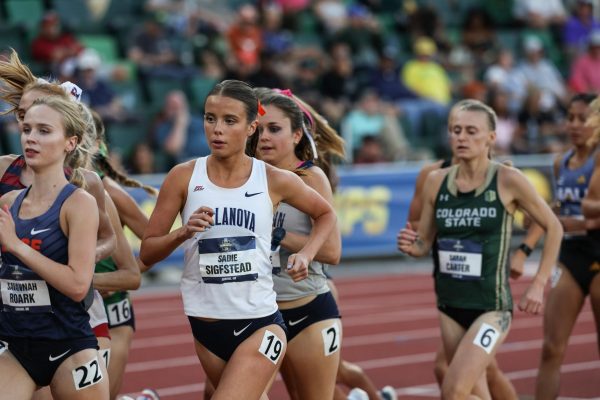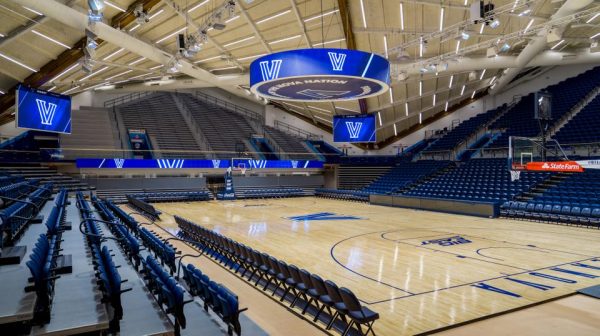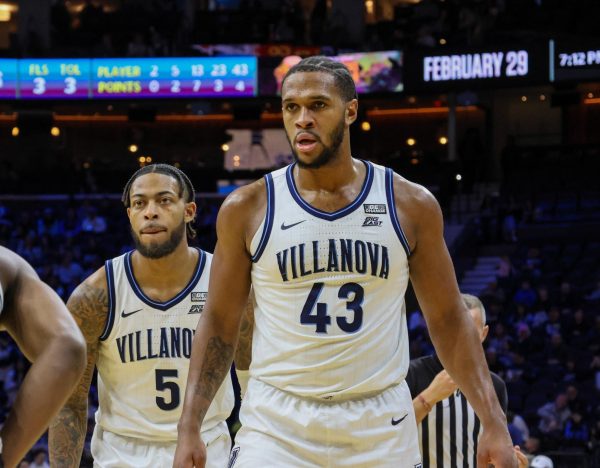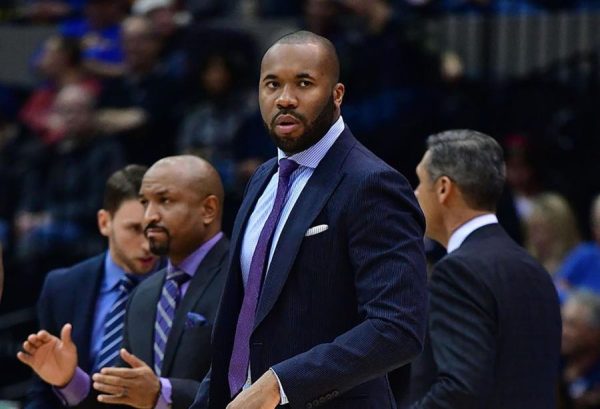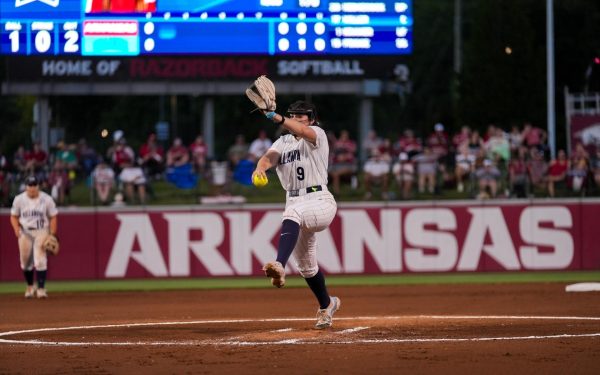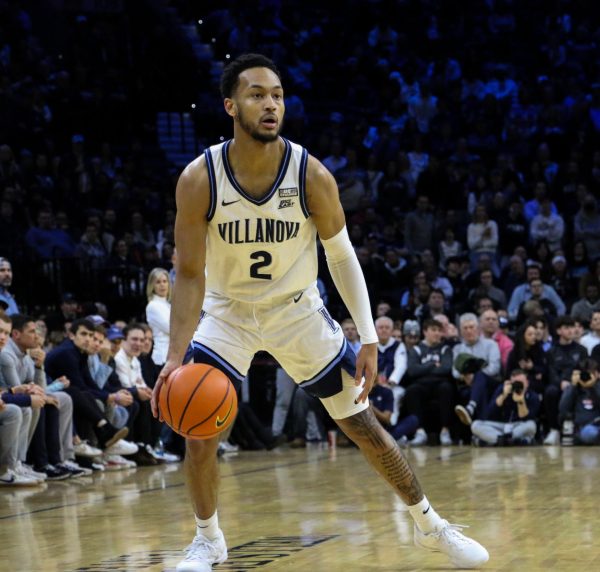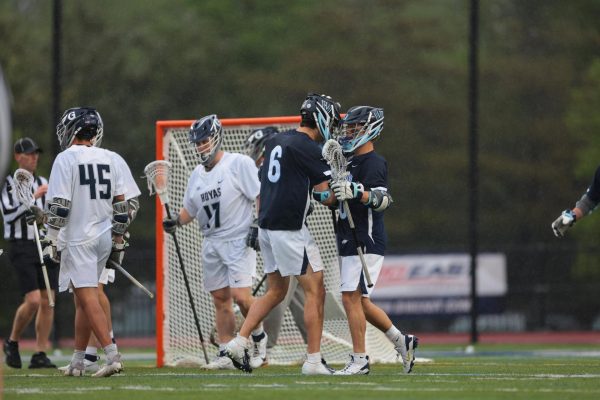Passion for sports fashion
September 15, 2010
When we were children, we were conditioned by society to fall nicely into specific gender roles. Boys were supposed to play sports while girls were meant to worry about fashion. However, as we have grown up many girls have traded in their sewing machines for softball bats, high heels for spikes and makeup for eye black.
On the other hand, boys have not been as flexible or willing to venture over to the dark side of things that may be considered fabulous or spectacular. Guys will take painstaking efforts to exhibit the highest level of ignorance regarding fashion.
If a girl were to test a boy, asking him what he thought about another man’s outfit, he would undoubtedly employ something resembling a Rocky Balboa impersonation saying, “I don’t know, I just don’t know, I mean his pants are kind of cool.”
This mass-mutual-male attempt to mask their eyes from fashion doesn’t mean that guys don’t have the urge to color-coordinate or talk about what’s in style. In an attempt to channel a passion for fashion, guys will inevitably turn to what they love most: sports.
Four guys are sitting in the TV room watching one of the weekend’s 64 possible football games. The first guy says, “You know, I really like the way that Atlanta uses the piping in their jerseys. It’s very modern looking.” The squirrely-looking man seated next to him says, “Yeah, I know what you mean, I personally think the Seahawk green is really slimming,” while another burps as he explains how much he loves the fact that the Cleveland Brown’s helmets are orange. The final guy, who was busy inhaling a plate of cheese fries, comments on how the University of Oregon has way too many uniforms.
These four men are able to have an articulate conversation about fashion without feeling emasculated because they are discussing it within the context of sports.
Similar to the real world, the fashion in sports is cyclical and goes through countless trends. Based on contemporary culture’s stylistic values, sports uniforms (not outfits) change and are modified, enabling professional teams and their athletes to participate in what is vogue.
The ’70s are an era that we wish we could take back. Many of us are thankful we were born a decade later. It was a time of scandal, war, astronauts, discos and ugly uniforms. Evidently the trend was to make every sports team look like a legion of crime-fighting superheroes. Teams began to adopt a monochromatic style, draping themselves in one solid color. Like the general style of the decade, big, bright colors were the craze, and all of the teams began to follow suit. The Philadelphia Phillies wore solid burgundy jerseys and pants while the Pirates and Oakland A’s wore yellow. Toward the end of the decade, one color wasn’t enough, and sports teams everywhere wanted to see rainbow patterns (i.e. the Dallas Mavericks and Houston Astros) on their favorite athletes’ uniforms. Taking it one step further, the Vancouver Canucks redefined the term “V-Neck” by wearing a uniform that was black with a huge red and yellow ‘V’ that wrapped around the shoulders and extended all the way down to the belly button.
The ’80s arrived, and with it came some vast improvements, but the uniforms back then were way off from what we consider stylish today. Extremely wide piping (New York Mets) became popular across the sporting landscape. These strips occupied so much of the uniform, it’s no wonder Bill Buckner was distracted in 1986.
But the true crime of the ’80s occurred in Tampa Bay when the Buccaneers donned their first uniforms. They resembled a color of a creamsicle that you would buy from an ice cream truck, and they were probably the reason that Tampa Bay set records for sporting futility – they couldn’t even take themselves seriously.
The ’90s came, and sports teams were looking in a new direction. They turned to cartoon mascots and logos, a decision that makes me wonder if we as a generation could have found our way out of a cardboard box. The Houston Rockets had their growling spaceship logo, while the Mighty Ducks of Anaheim turned to kids’ movies to discover their first look. The New York Islanders tried out their ninja-fisherman logo, while the Calgary Flames took a shot at a fire-breathing dragon-horse graphic. The decade was fun, but we made so many sports fashion faux pas that even Zach Morris couldn’t talk his way out of them.
The new millennium gave uniforms a rebirth. Reflecting the nation’s Y2K, computer crazy phase, teams began to adopt black, sleek, fast and modern-looking duds. It was a huge fad to have a black alternate.
If your colors were red, white and blue, you had a black uniform. If your team was brown and gold, you had a black uniform. In many cases the blackout of the new millennium was an innovative success, but some teams just couldn’t pull it off.
Even today we are going through trends that we won’t realize are mistakes until our children ask us, “What were they thinking?” Sports teams are currently going through an identity crisis.
With all of the scandals, commercialization and egos, fans long for the past and the golden age of sports. In order to reconnect with a better era, fans have expressed their interest in the most recent fad, the throwback uniform. Every team has one, and some teams have throwbacks even if the team originated in the ’90s.
Millions upon millions of dollars are spent annually on team jerseys and fan merchandise. But in an age of free agency where players frequently do not play in the same place for more than a year, an investment in a uniform is not as rational as it once was. Now, fans are buying throwback jerseys of their favorite team’s former greats – chances are they are not going to be changing teams in retirement.
Like Jerry Seinfeld once said, “Loyalty to any one sports team is pretty hard to justify because the players are always changing, the team could move to another city. You’re actually rooting for the clothes, when you get right down to it.”
This is why fashion in sports is so important to sports guys. Ever-changing uniforms don’t serve as an outlet for our inner Jay Alexander. Like the ancient Greek city-states, which had their flags to represent them, our sports teams are represented by their uniforms.
Uniforms reflect a team, and its city’s identity. If you are a tough team (Steelers), you have tough jerseys. If you are a fast team (Redwings), you have fast jerseys. While fashion won’t win you the game, it is still important.
As a sports fan, I am pushing the limits of my comfort zone when discussing fashion in such an in-depth manner. But regardless of what we are socially “supposed” to like and do, sports enable us to exercise our passion for fashion in the only way in which we feel safe.


